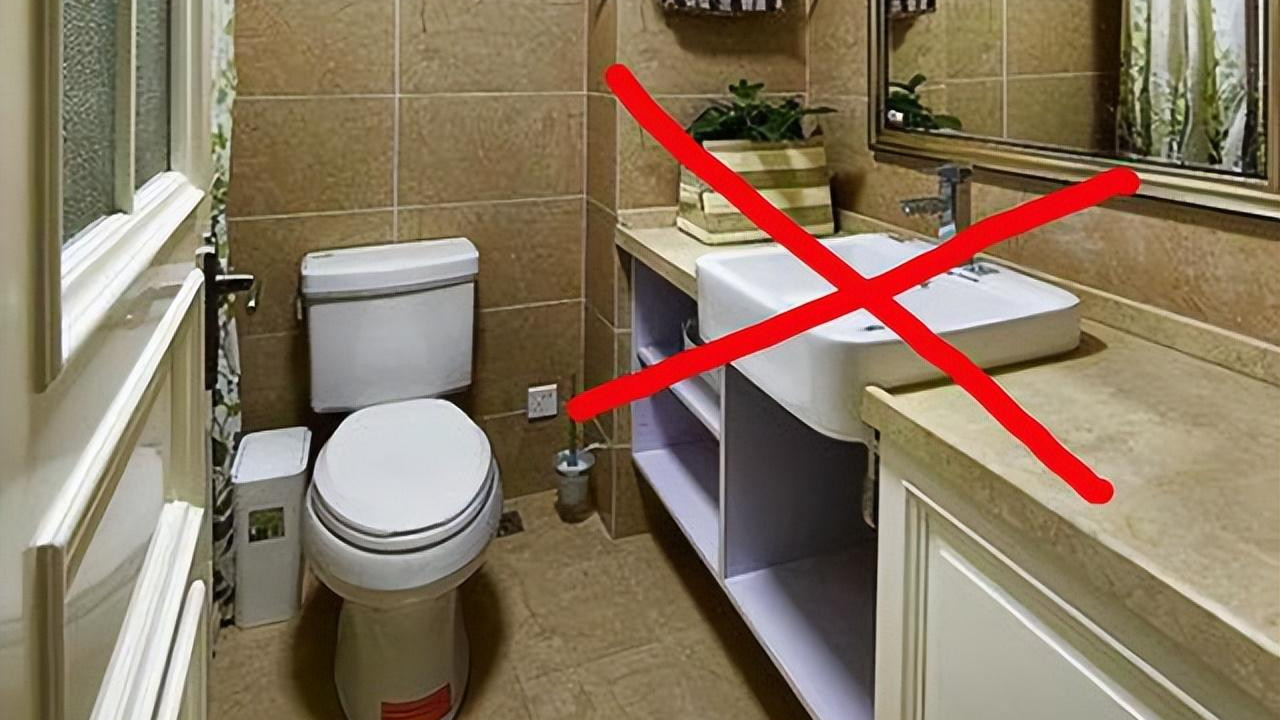гҖҗAndroid ж•ҷдҪ жү“йҖ зӢ¬дёҖж— дәҢзҡ„еҲ·ж–°еҠ иҪҪжЎҶжһ¶гҖ‘е№ҪжІүи°ўдё–дәӢпјҢдҝҜй»ҳзӘҘе”җиҷһгҖӮиҝҷзҜҮж–Үз« дё»иҰҒи®Іиҝ°Android ж•ҷдҪ жү“йҖ зӢ¬дёҖж— дәҢзҡ„еҲ·ж–°еҠ иҪҪжЎҶжһ¶зӣёе…ізҡ„зҹҘиҜҶпјҢеёҢжңӣиғҪдёәдҪ жҸҗдҫӣеё®еҠ©гҖӮ
е…¶е®һж—©еңЁеҺ»е№ҙдёғжңҲ,
зҫӨйҮҢе°Ҹдјҷдјҙе°ұжңүи®©жҲ‘е…ұдә«иҝҷдёӘгҖӮдҪҶжҲ‘еҪ“ж—¶з»қзҡ„жҠҖжңҜдёҚзәҜзҶҹгҖӮд»Јз Ғжңүbugд»Җд№Ҳзҡ„гҖӮжІЎжңүеҶҷеҮәжқҘгҖӮзҺ°еңЁж„ҹи§үж•ҙзҗҶзҡ„е·®дёҚеӨҡдәҶгҖӮе°ұеҶҷеҮәжқҘи®©еӨ§е®¶зңӢзңӢ,
жңүй—®йўҳдёҖиө·и®Ёи®әи§ЈеҶігҖӮ
иҜҙеҲ°еҲ·ж–°еҠ иҪҪ,
жҲ‘们第дёҖдёӘжғіеҲ°е•Ҙ,
еҜ№дәҶе°ұжҳҜswiperefreshlayout,
иҝҳжңүд»Җд№ҲSuperSwiperefreshlayout,
XRecyclerViewзӯүзӯүгҖӮеҸҚжӯЈиҖҒеӨҡдәҶ,
жҲ‘иҝҳжҳҜд№ӢеүҚйӮЈеҸҘиҜқ,
дёҚз®Ўз”Ёд»Җд№Ҳ,
жҲ‘们йңҖиҰҒзҹҘйҒ“д»–зҡ„еҺҹзҗҶгҖӮ
жү“йҖ жЎҶжһ¶ејҖе§Ӣ еҜ№дәҺеҲ·ж–°еҠ иҪҪзҡ„е®һзҺ°,
дҪ 们第дёҖдёӘжғіеҲ°зҡ„жҳҜд»Җд№Ҳ?
жҳҜз”Ёswiperefresh然еҗҺеңЁrecyclerviewеә•йғЁеҠ дёҖдёӘдёҚеҗҢtype?
иҝҳжҳҜз”ЁдәӢ件жӢҰжҲӘе‘ў?
йӮЈеҝ…йЎ»жҳҜдәӢ件жӢҰжҲӘе•Ҡ,
иҷҪ然зҺ°еңЁswiperefreshlayoutеҫҲзҒ«,
еҹәжң¬еҫҲеӨҡappйғҪиғҪзңӢеҲ°д»–гҖӮдҪҶжҳҜйҒҮеҲ°йӮЈз§Қеқ‘жҜ”е…¬еҸёиҜҙеҲ·ж–°иҰҒз”ЁиҮӘе·ұе…¬еҸёlogoдҪ д№ҹжІЎиҫҷгҖӮеҜ№жҠҠгҖӮгҖӮеҘҪдәҶ,
ж„ҹи§үеҫ—зҪӘдәҶеҘҪеӨҡе…¬еҸё,
дёҚз®Ўд»–,
жҲ‘们继з»ӯгҖӮ
еҰӮжһңжңүе°Ҹдјҷдјҙй•ҝжңҹзңӢжҲ‘еҚҡе®ў,
еә”иҜҘзҹҘйҒ“жҲ‘еүҚйқўжңүдёҖзҜҮжҳҜеҶҷиҝҮдәӢ件жӢҰжҲӘзҡ„гҖӮжІЎй”ҷ,
е°ұжҳҜ д»Һжәҗз Ғи§’еәҰеҲҶжһҗеөҢеҘ—ж»‘еҠЁжңәеҲ¶NestedScrolling
еҜ№дәҺnestedscrollingдёҚдәҶи§Јзҡ„еҗҢеӯҰеҸҜд»ҘзңӢе®ҢеңЁз»§з»ӯдёӢж–ҮгҖӮ
жҲ‘们е…ҲзңӢдёӢжҲ‘们зҡ„ж•Ҳжһңеӣҫ:

ж–Үз« еӣҫзүҮ
иҖҒй“Ғ, жІЎжҜӣз—…гҖӮдёӢйқўжҲ‘д»Ӣз»ҚеҰӮдҪ•е®һзҺ°зҡ„гҖӮ
дёӢжӢүеҲ·ж–° йҰ–е…ҲжҲ‘们з»ҷеҮәеҰӮдёӢеҮ дёӘеҸӮж•°, еҗҺйқўиҰҒз”Ё:
private NestedScrollingParentHelper helper =
null;
private boolean IsRefresh =
true;
private boolean IsLoad =
true;
//ж»‘еҠЁзҡ„жҖ»и·қзҰ»
private int totalY =
0;
private LinearLayout headerLayout =
null;
private MyRecyclerView myRecyclerView =
null;
private LinearLayout footerLayout =
null;
既然жҳҜеҲ·ж–°, жҲ‘们зҡ„ж»ҡеҠЁиӮҜе®ҡжҳҜеңЁзҲ¶viewд№ӢеүҚзҡ„гҖӮжүҖд»ҘжҲ‘们йңҖиҰҒеңЁonNestedPreScrollиҝҷдёӘж–№жі•йҮҢйқўеҶҷдёҠжҲ‘们жүҖйңҖиҰҒж”№еҠЁзҡ„x, yеҖјгҖӮ
жҲ‘们йңҖиҰҒз”ЁзҲ¶viewеҺ»жӢҰжҲӘе®ғгҖӮ
жҲ‘们йңҖиҰҒеҲӨж–ӯdyзҡ„еҖјжҳҜеҗҰеӨ§дәҺ0, еӣ дёәеӨ§дәҺ0жҳҜеҲ·ж–°ж“ҚдҪң, е°ҸдәҺ0жҳҜеҠ иҪҪж“ҚдҪңгҖӮ然еҗҺжҲ‘们йңҖиҰҒеҲӨж–ӯrecyclerviewжҳҜеҗҰжҳҜзәөеҗ‘зҡ„иҖҢдёҚжҳҜжЁӘеҗ‘зҡ„гҖӮ
public void onNestedPreScroll(View target, int dx, int dy, int[] consumed) {
if (IsRefresh) {
if (dy >
0) {
if (myRecyclerView.isOrientation(0)) {
totalY +
=
dy;
if ((totalY / 2) <
=
0) {
scrollTo(0, totalY / 2);
consumed[1] =
dy;
} else {
scrollTo(0, 0);
consumed[1] =
0;
}
}
return;
}
}дёҠжӢүеҠ иҪҪ дёҠйқўжҲ‘д№ҹиҜҙдәҶonNestedPreScrollиҝҷдёӘж–№жі•дёӯеҲӨж–ӯdy< 0жүҚжҳҜеҠ иҪҪж“ҚдҪңгҖӮжүҖд»Ҙз»јдёҠжүҖиҝ°, д»Јз ҒеҸҳжҲҗдәҶиҝҷж ·:
public void onNestedPreScroll(View target, int dx, int dy, int[] consumed) {
if (totalY <
0 &
&
myRecyclerView.isOrientation(0) || totalY >
0 &
&
myRecyclerView.isOrientation(1)) {
isfling =
true;
}
if (IsRefresh) {
if (dy >
0) {
if (myRecyclerView.isOrientation(0)) {
totalY +
=
dy;
if ((totalY / 2) <
=
0) {
scrollTo(0, totalY / 2);
consumed[1] =
dy;
} else {
scrollTo(0, 0);
consumed[1] =
0;
}
}
return;
}
}
if (IsLoad) {
if (dy <
0) {
if (myRecyclerView.isOrientation(1)) {
totalY +
=
dy;
if ((totalY / 2) >
=
0) {
scrollTo(0, totalY / 2);
consumed[1] =
dy;
} else {
scrollTo(0, 0);
consumed[1] =
0;
}
}
return;
}
}
}жңҖеҗҺжҲ‘们йңҖиҰҒеңЁеӯҗviewж»‘еҠЁз»“жқҹеҗҺ, е®һиЎҢеҰӮдёӢж“ҚдҪң:
//еӯҗviewж»‘еҠЁз»“жқҹи°ғз”Ё
//dyUnconsumed <
0 еҗ‘дёӢж»ҡ
//dyUnconsumed >
0 еҗ‘дёҠж»ҡ
public void onNestedScroll(View target, int dxConsumed, int dyConsumed, int dxUnconsumed, int dyUnconsumed) {
if (dyUnconsumed !=
0) {
totalY +
=
dyUnconsumed;
scrollTo(0, totalY / 2);
}
}е…¶е®һжңҖдё»иҰҒзҡ„дёӨдёӘж–№жі•е·Із»Ҹи§ЈеҶідәҶ, е…¶д»–еҲ°жІЎд»Җд№ҲдәҶ, иҝҷиҫ№, жҲ‘жҠҠnestedscrollingзҡ„8дёӘжҺҘеҸЈзҡ„еҠҹиғҪе’ҢиҮӘе®ҡд№үrecyclerviewж”ҫеҮәжқҘгҖӮе·ІеҸҳеӨ§е®¶еҸӮиҖғгҖӮеёҢжңӣеӨ§е®¶йғҪиғҪе®һзҺ°иҮӘе·ұзҡ„еҲ·ж–°еҠ иҪҪгҖӮе‘ҠеҲ«swiperefreshlayoutгҖӮ
ж·»еҠ headerе’Ңfooter иҝҷйҮҢжҲ‘们еҸӮиҖғlistviewиҮӘеёҰзҡ„addheaderviewе’ҢaddfooterviewгҖӮд»Јз ҒеҰӮдёӢ:
public void addHeaderView(View headerView, int headerHeight) {
this.headerLayout.removeAllViews();
this.headerLayout.addView(headerView);
LayoutParams layoutParams =
new LayoutParams(LayoutParams.MATCH_PARENT, headerHeight);
layoutParams.topMargin =
-headerHeight;
this.headerLayout.setLayoutParams(layoutParams);
}public void addFooterView(View footerView, int footerHeight) {
this.footerLayout.removeAllViews();
this.footerLayout.addView(footerView);
this.footerLayout.setLayoutParams(new LayoutParams(LayoutParams.MATCH_PARENT, footerHeight));
}еҮ дёӘжҺҘеҸЈзҡ„е®һзҺ°
public boolean onStartNestedScroll(View child, View target, int nestedScrollAxes) {
return true;
}public void onNestedScrollAccepted(View child, View target, int axes) {
helper.onNestedScrollAccepted(child, target, axes);
}//зҲ¶viewжӢҰжҲӘеӯҗviewзҡ„ж»ҡеҠЁ
public void onNestedPreScroll(View target, int dx, int dy, int[] consumed) {
if (totalY <
0 &
&
myRecyclerView.isOrientation(0) || totalY >
0 &
&
myRecyclerView.isOrientation(1)) {
isfling =
true;
}
if (IsRefresh) {
if (dy >
0) {
if (myRecyclerView.isOrientation(0)) {
totalY +
=
dy;
if ((totalY / 2) <
=
0) {
scrollTo(0, totalY / 2);
consumed[1] =
dy;
} else {
scrollTo(0, 0);
consumed[1] =
0;
}
}
return;
}
}
if (IsLoad) {
if (dy <
0) {
if (myRecyclerView.isOrientation(1)) {
totalY +
=
dy;
if ((totalY / 2) >
=
0) {
scrollTo(0, totalY / 2);
consumed[1] =
dy;
} else {
scrollTo(0, 0);
consumed[1] =
0;
}
}
return;
}
}
}//еӯҗviewж»‘еҠЁз»“жқҹи°ғз”Ё
//dyUnconsumed <
0 еҗ‘дёӢж»ҡ
//dyUnconsumed >
0 еҗ‘дёҠж»ҡ
public void onNestedScroll(View target, int dxConsumed, int dyConsumed, int dxUnconsumed, int dyUnconsumed) {
if (dyUnconsumed !=
0) {
totalY +
=
dyUnconsumed;
scrollTo(0, totalY / 2);
}
}public void onStopNestedScroll(View child) {
helper.onStopNestedScroll(child);
if (onTouchUpListener !=
null) {
isfling =
false;
onTouchUpListener.touchUp();
}
}public boolean onNestedFling(View target, float velocityX, float velocityY, boolean consumed) {
return isfling;
}public boolean onNestedPreFling(View target, float velocityX, float velocityY) {
return isfling;
}public int getNestedScrollAxes() {
return helper.getNestedScrollAxes();
}иҮӘе®ҡд№үrecyclerview
既然жҳҜиҮӘе·ұеҶҷзҡ„еҲ·ж–°еҠ иҪҪжЎҶжһ¶, жҖ»дёҚиғҪиҝҳжңүиҮӘе®ҡд№үlayoutдёӯеңЁж”ҫдёӘrecyclerviewгҖӮеӨҡйә»зғҰ, иҮӘе®ҡд№үдёҖдёӘ, зӣҙжҺҘж”ҫеңЁйҮҢйқў, 然еҗҺеҲҶеҲ«ж”ҫдёӘheaderе’Ңfooter е°ұжІЎеҝ…иҰҒжҜҸж¬ЎжңүйЎөйқўз”ЁеҲ°еҲ·ж–°йғҪиҰҒеҶҷдёҖдёӘеёғеұҖгҖӮ3дёӘеёғеұҖи§ЈеҶіж•ҙдёӘйЎ№зӣ®зҡ„еҲ·ж–°е’ҢеҠ иҪҪгҖӮиҜқдёҚеӨҡиҜҙ, д»Јз ҒеҰӮдёӢ:
private class MyRecyclerView extends RecyclerView {
private StaggeredGridLayoutManager staggeredGridLayoutManager =
null;
private LinearLayoutManager linearLayoutManager =
null;
private GridLayoutManager gridLayoutManager =
null;
private boolean isScrollLoad =
false;
private boolean isScrollRefresh =
false;
public MyRecyclerView(Context context) {
super(context);
setVerticalFadingEdgeEnabled(false);
setHorizontalFadingEdgeEnabled(false);
setVerticalScrollBarEnabled(false);
setHorizontalScrollBarEnabled(false);
setOverScrollMode(OVER_SCROLL_NEVER);
setItemAnimator(new DefaultItemAnimator());
}private void setMyLayoutManager(LayoutManager layoutManager) {
if (layoutManager instanceof StaggeredGridLayoutManager) {
staggeredGridLayoutManager =
(StaggeredGridLayoutManager) layoutManager;
} else if (layoutManager instanceof GridLayoutManager) {
gridLayoutManager =
(GridLayoutManager) layoutManager;
} else if (layoutManager instanceof LinearLayoutManager) {
linearLayoutManager =
(LinearLayoutManager) layoutManager;
}
setLayoutManager(layoutManager);
if (!isVertical()) {
throw new NullPointerException("
vertical!"
);
}
}private boolean isOrientation(int orientation) {//orientation,0д»ЈиЎЁеҗ‘дёӢ,
1д»ЈиЎЁеҗ‘дёҠ
if (orientation =
=
0)
return isCanPullDown();
else if (orientation =
=
1)
return isCanPullUp();
return false;
}private boolean isCanPullDown() {
return !canScrollVertically(-1);
}private boolean isCanPullUp() {
return !canScrollVertically(1);
}//private int scrollLoad() {
//int lastItem =
0;
//int itemCount =
0;
//int spanCount =
1;
//if (staggeredGridLayoutManager !=
null) {
//lastItem =
staggeredGridLayoutManager.findLastVisibleItemPositions(null)[0];
//itemCount =
staggeredGridLayoutManager.getItemCount();
//spanCount =
staggeredGridLayoutManager.getSpanCount();
//} else if (linearLayoutManager !=
null) {
//lastItem =
linearLayoutManager.findLastVisibleItemPosition();
//itemCount =
linearLayoutManager.getItemCount();
//spanCount =
1;
//} else if (gridLayoutManager !=
null) {
//lastItem =
gridLayoutManager.findLastVisibleItemPosition();
//itemCount =
gridLayoutManager.getItemCount();
//spanCount =
gridLayoutManager.getSpanCount();
//}
//return ((itemCount - 1) / spanCount +
1) - (lastItem / spanCount +
1);
//}private boolean isVertical() {
if (staggeredGridLayoutManager !=
null)
return staggeredGridLayoutManager.getOrientation() =
=
StaggeredGridLayoutManager.VERTICAL;
else if (linearLayoutManager !=
null)
return linearLayoutManager.getOrientation() =
=
LinearLayoutManager.VERTICAL;
else if (gridLayoutManager !=
null)
return gridLayoutManager.getOrientation() =
=
GridLayoutManager.VERTICAL;
return false;
}//public void onScrolled(int dx, int dy) {
//if (dy >
0 &
&
!isScrollLoad) {
//if (oLior !=
null) {
//onScrollListener.scrollLoad(sc`
`
`
`
`
`
`
`
`
`
`
llLoad());
//дј йҖ’ж»ҡеҠЁеҲ°еҖ’数第еҮ иЎҢ
//}
//}
//}
}иҝҷж ·жҲ‘们еҸҳе®һзҺ°дәҶиҮӘе·ұзҡ„еҲ·ж–°еҠ иҪҪжЎҶжһ¶, д»Јз ҒжҲ‘е·ІдёҠдј еҲ°github: https://github.com/sw950729/SWPullRecyclerLayout
иҮідәҺдҪҝз”Ёж–№жі•еҰӮдёӢ:
jcenter:
compile '
com.angel:SWPullRecyclerLayout:1.0.0'
maven:
<
dependency>
<
groupId>
com.angel<
/groupId>
<
artifactId>
SWPullRecyclerLayout<
/artifactId>
<
version>
1.0.0<
/version>
<
type>
pom<
/type>
<
/dependency>
жҳҺеӨ©жӯЈејҸдёҠзҸӯ, дёҠзҸӯд№ӢеүҚжҠҠиҝҷзҜҮе№Іиҙ§еҲҶдә«з»ҷеӨ§е®¶гҖӮдҫқж—§жҳҜйӮЈ2еҸҘиҜқгҖӮдёҚз®Ўз”Ёд»Җд№ҲжҲ‘们йңҖиҰҒзҹҘйҒ“еҺҹзҗҶгҖӮиҝҳжңүе°ұжҳҜжңүд»Җд№ҲдёҚжҮӮзҡ„жҸҗеҮәжқҘгҖӮеҸҜд»ҘдёҖиө·и®Ёи®әгҖӮ
жҺЁиҚҗйҳ…иҜ»
- AndroidеӣҫзүҮеҠ иҪҪжЎҶжһ¶жңҖе…Ёи§ЈжһҗпјҢGlideзҡ„еҹәжң¬з”Ёжі•
- дҪҝз”ЁTkinterеҲӣе»әеӨҡйҮҚйҖүжӢ©
- з®—жі•пјҲеҲӣе»әдёҖдёӘе…·жңүе·Ұ-еӯҗ-еҸі-е…„ејҹиЎЁзӨәзҡ„ж ‘пјү
- еҲӣе»әWYSIWYGж–ҮжЎЈзј–иҫ‘еҷЁ|иҮӘ然иҜӯиЁҖзј–зЁӢ
- з”ЁPythonеҲӣе»әдҪ зҡ„第дёҖдёӘеә”з”ЁзЁӢеәҸ
- дёҖдёӘеҲӣж„Ҹзҡ„C++зЁӢеәҸпјҢз”ЁдәҺзј©ж”ҫж•ҙж•°
- еӨ„зҗҶдёӯзҡ„еҲӣж„Ҹзј–зЁӢ|S2пјҲжҙӣдјҰиҢЁеҗёеј•еӯҗпјү
- еӨ„зҗҶдёӯзҡ„еҲӣж„Ҹзј–зЁӢ|S1пјҲRandom Walkerпјү
- з‘һеЈ«дҝЎиҙ·йқўиҜ•з»ҸеҺҶ|е®һд№ ж ЎеӣӯпјҲжөҰйӮЈпјү












